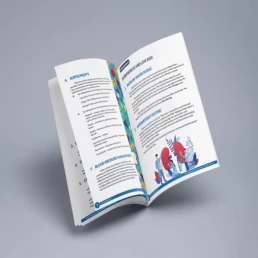The human body is a marvel of biological engineering, with each organ playing its role in maintaining balance and health. When the kidneys falter, we turn to dialysis machines to aid in removing toxins. However, an emerging concept offers an alternative: intestinal dialysis. This method proposes detoxifying the body by using the intestines and their microbial inhabitants. Let’s delve into this groundbreaking approach.
By Majd Isreb, MD, FACP, FASN, IFMCP
Intestinal Dialysis and the Gut Microbiota
The gut microbiota, comprising trillions of microbes, has been under extensive research for its role in various physiological functions. Certain bacterial strains have been identified to influence the production or removal of uremic toxins. By modulating the gut microbiota through interventions like probiotics and prebiotics, we can enhance the body’s natural detoxification processes.
Oral Adsorbents in Intestinal Dialysis
One of intestinal dialysis’s main pillars is using oral adsorbents. These compounds, when consumed, bind to uremic toxins within the intestines, effectively trapping them and facilitating their excretion. Activated charcoal is a well-known adsorbent, but there’s also AST-120, a spherical carbon adsorbent. Preliminary studies on AST-120 suggest its potential to delay the progression of chronic kidney disease by adsorbing uremic toxins. However, the full extent of its benefits and safety profile is still under review.
Enhancing Intestinal Clearance
An interesting facet of intestinal dialysis is the potential to increase the removal of uremic solutes directly from the blood into the intestines. This method would entail manipulating certain transporters in the intestines or deploying pharmaceutical agents. The promise here is twofold: not only could this method help in removing toxins, but it might also reduce the burden on failing kidneys.
Direct Intestinal Dialysis Devices
Drawing inspiration from peritoneal dialysis, researchers are looking at the possibility of using the mucosa of the intestines as a semi-permeable membrane for detoxification. Devices would be placed directly within the intestines, functioning similarly to how dialysis machines operate. Although still in nascent stages, this approach could redefine how we view and utilize our gastrointestinal system.
Join us to end the kidney disease epidemic
Challenges and Considerations
While the promise of intestinal dialysis is exciting, it’s essential to approach it with a balanced view. Introducing external agents or devices into the gut ecosystem may have unintended consequences. The gut’s primary role is digestion and nutrient absorption, and there’s a delicate balance of microbial interactions that maintain gut health. Introducing changes to this environment might lead to unforeseen complications, especially for prolonged periods.
The bottom line
Intestinal dialysis is a testament to the ever-evolving field of medical science. New therapeutic avenues are opening up as we continue to unlock the mysteries of the human gut and its microbial residents. Whether it’s through direct intestinal devices, oral adsorbents, or microbiota modulation, the dream is to offer patients with kidney diseases a more natural, less invasive detoxification method. With continued research and careful consideration of the challenges ahead, intestinal dialysis might become a mainstay in managing kidney ailments.






